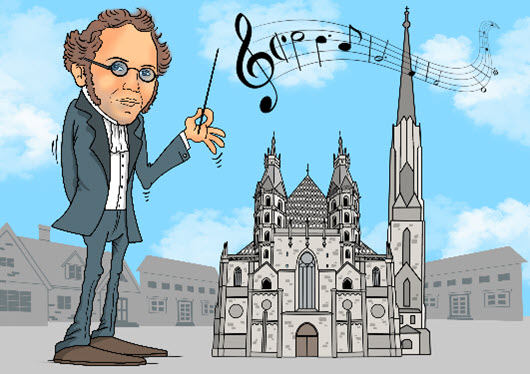Gottfried Preyer was performing virtuoso quartets by Haydn and Mozart at the age of seven. Soon he was invited to perform at church festivals in the vicinity of Hausbrunn, where his father was the schoolmaster and choirmaster. After his pedagogical education, Gottfried’s original plans to teach school there changed. In 1828, at the age of 21, he met Simon Sechter, the teacher of Franz Schubert. Later, Ján Levoslav Bella, the librettist of the first Slovak opera, and Anton Bruckner rounded out this group. At the age of 32, Preyer became professor of harmony and composition in Vienna. During his travels he visited the other European centres of music. In 1844 he became the assistant director of music of the Viennese court chapel. Starting in 1853, and until his death in 1901, he was thedirector of music at St. Stephen’s Cathedral. During his professional career, church music enjoyed a renaissance. From 1815 onward, the nobility were no longer patrons of sacred music, and parishesbecame responsible for recruiting the church musicians. A well-endowed church music programme is the pride of any parish and accessible for all. Worship and the enjoyment of music allow Sundays to become a special experience. Preyer’s repertoire comprises over 600 secular and religious works of music. In 1894 he was given the status of nobility. Another legacy is the foundation of a children’s hospital in Vienna, which resulted from the sale of his noteworthy art collection.


